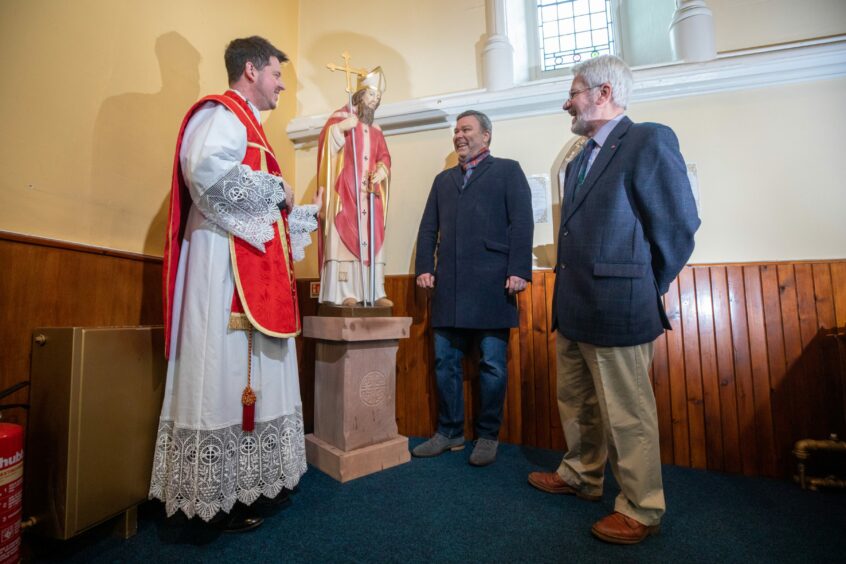Arbroath has unveiled a new tribute to its patron saint set on one of the area’s most important ancient symbols.
A magnificent figure of St Thomas has recently been acquired by the Dishlandtown Street Catholic church which bears his name.
And the statue is now on display on a base crafted by Angus stone carver David McGovern which features the rare 9th century St Vigeans knot.
It brings together two significant elements of Arbroath history and was unveiled for the first time on Thursday.
Growing collection of Angus work
David, who operates as Monikie Rock Art, was the creator of the first new-design Pictish stone in Angus in more than a millennium.
It was commissioned as part of the Arbroath 2020 celebration around the 700th anniversary of the signing of the Declaration of Arbroath.
And he has gone on to carve other Pictish-inspired stones in the area.
Those include a stunning piece in tribute to environmental campaigner Ralph Coutts, who died in 2020.
The new work incorporates the intricate never-ending design which graces the 9th century Pictish cross slab known as the Drosten Stone at St Vigeans.
St Vigeans’ collection of more than 40 stones is the largest concentration of early Christian sculpture in Angus.
But, until now, there has been little lasting commemoration of the burgh’s patron saint.
Rare design
Pictish heritage expert Norman Atkinson joined parish priest Father Andew Marshall and others at the unveiling.
Norman said only a few stones bearing the St Vigeans knot exist.
“The local slab was carved in the early 9th century and has a rare inscription which includes the names of two Pictish Kings, Drosten (845-8) and his father Uurad (839-42).
“Only a few examples of the knot have been identified, including those on sculptures in Durham and County Louth.
“It was perhaps chosen to decorate this important sculpture with its royal associations.
“The interlacing has no beginning or end,” said Norman.
“Art historians have many differing views on the religious meaning on this to be certain of the actual significance.
“But in purely sculptural terms it is a technique used to demonstrate the skills of the designer/sculptor.”
12th Century dedication
And he gave an insight into the history of the patron saint.
“In 1178, King William I of Scots gave the shire of Aberbrothoc with its church and many other churches and lands to his new foundation – an abbey of the order of Tiron in France, the largest during his reign,” said Norman.
“It was dedicated to the newly sanctified St Thomas Becket, martyred bishop of Canterbury.
“Arbroath Abbey became the burial place of King William before the high altar, the only Scottish King to be buried in Angus.
“St Thomas became the patron saint of Arbroath and natives were known as being from St Tam’s.”
But interest in the figure waned after the 16th century Reformation
His name was given to the St Thomas Bar, initially in Tower Neuk, and now James Street.
And the town’s swimming club still bears his name.
Norman added: “However, in 1847 a Roman Catholic church was erected in Dishland, now Dishlandtown Street.
“It was consecrated in February 1848 and dedicated to the patron saint of the town, St Thomas of Canterbury.”














